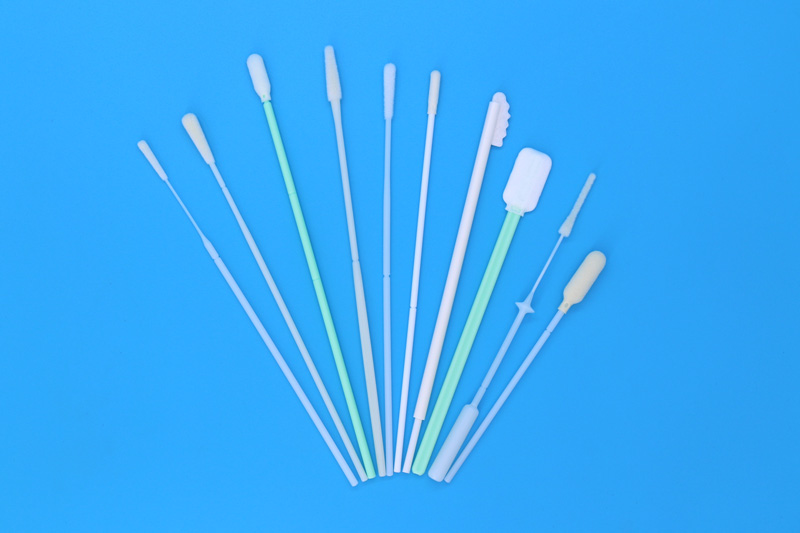Microbiological surface sampling plays a crucial role in various industries, including healthcare, food production, and environmental monitoring. The choice of swab material used in these sampling techniques can significantly impact the accuracy and reliability of the results. This article aims to explore the effects of different swab materials on microbiological surface sampling, highlighting their advantages, limitations, and overall impact on the quality of data obtained.

1. Nylon Swabs
Nylon swabs have proven to be highly effective in microbiological surface sampling, particularly for viral detection. They have a superior release efficiency, ensuring maximum recovery of microorganisms from surfaces. Nylon swabs are also less likely to introduce contaminants, making them suitable for sensitive applications. However, their cost and availability may be limiting factors for widespread use.
2. Foam Swabs
Foam swabs have gained popularity in recent years due to their superior performance in microbiological surface sampling. The open-cell structure of foam swabs provides a larger surface area for sample collection, enhancing the recovery of microorganisms. They are also less prone to shedding fibers, reducing the risk of contamination. However, foam swabs may retain moisture, leading to potential microbial growth during transportation and storage. Proper handling and immediate transfer of samples are crucial to mitigate this issue.
3. Polyester Swabs
Polyester swabs offer a good alternative to cotton swabs, as they have a lower risk of introducing contaminants. They are known for their excellent absorption properties, enabling efficient collection of microorganisms from surfaces. Polyester swabs are also compatible with various transport media, making them suitable for different laboratory analyses. However, their effectiveness in collecting certain types of microorganisms, such as viruses, may be limited compared to other swab materials.
4. Cotton Swabs
Cotton swabs have been widely used for microbiological surface sampling due to their affordability and accessibility. They are effective in collecting a wide range of microorganisms, including bacteria, fungi, and viruses. However, cotton swabs can introduce contaminants, such as fibers and particles, which may interfere with the analysis and lead to false-positive or false-negative results. Additionally, the absorption capacity of cotton swabs may vary, affecting the recovery of microorganisms from surfaces.
The choice of swab material in microbiological surface sampling is crucial for obtaining accurate and reliable results. Each swab material has its advantages and limitations, which should be carefully considered based on the specific application and target microorganisms. Foam swabs and polyester swabs offer improved performance and reduced risk of contamination compared to cotton swabs. Nylon swabs, although highly effective, may be more suitable for specialized applications. Researchers and professionals should select the most appropriate swab material to optimize the quality of data obtained and ensure the integrity of microbiological surface sampling.
As consumables manufacturer in the field of in vitro diagnostic, Meidike Gene offers a variety of sampling swabs, If you are interested, please contact us or click the link below to learn more:
https://www.medicoswab.com/products/specimen-collection-swab/

















